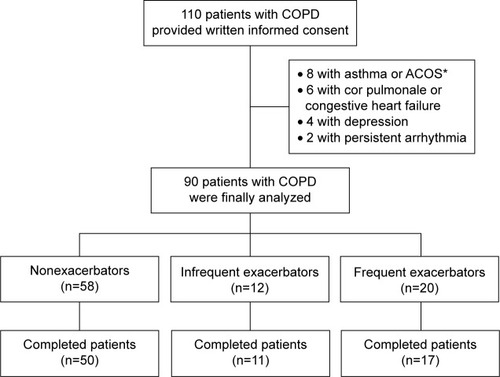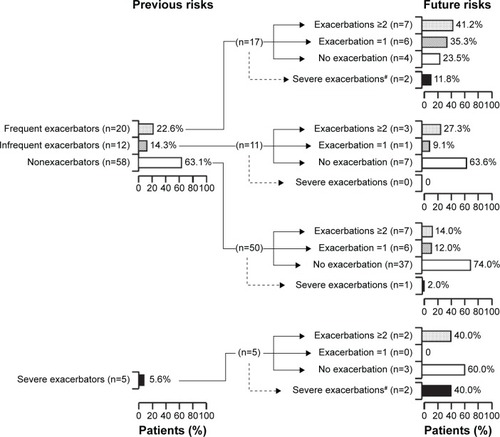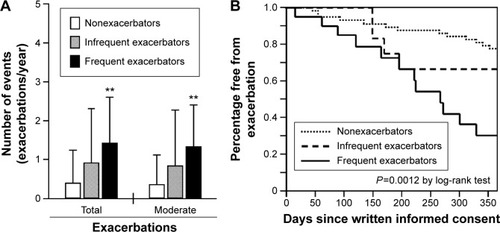Figures & data
Figure 1 Study design.
Abbreviation: FEV1, forced expiratory volume in 1 second.

Table 1 Characteristics of nonexacerbators and infrequent and frequent exacerbators
Figure 2 Stability of the phenotypes of frequent and infrequent exacerbators, nonexacerbators, and severe exacerbators.

Figure 3 Comparison of annual exacerbation and hospitalization among nonexacerbators and infrequent and frequent exacerbators.

Table 2 Baseline characteristics of patients with future exacerbation (once or more) and frequent exacerbation (twice or more) by univariate analysis
Table 3 Baseline characteristics of patients with future exacerbation (once or more) and frequent exacerbation (twice or more) by multivariate analysis
